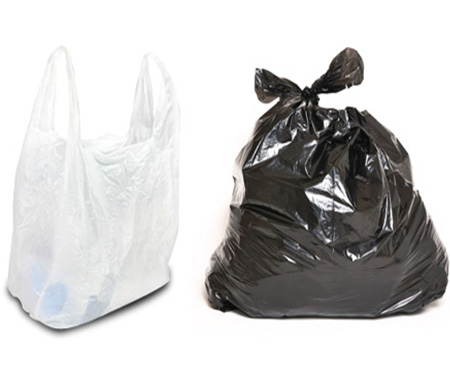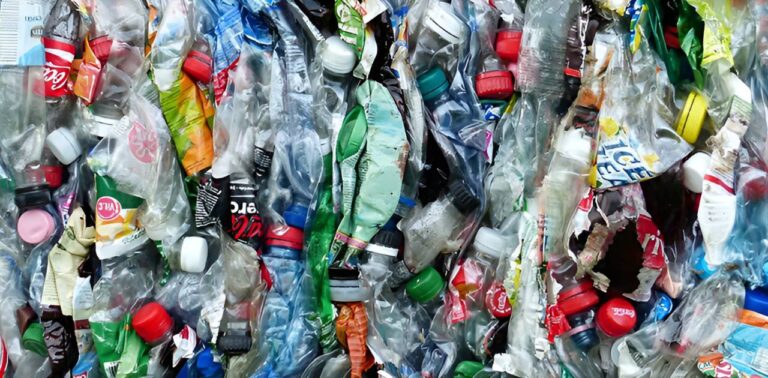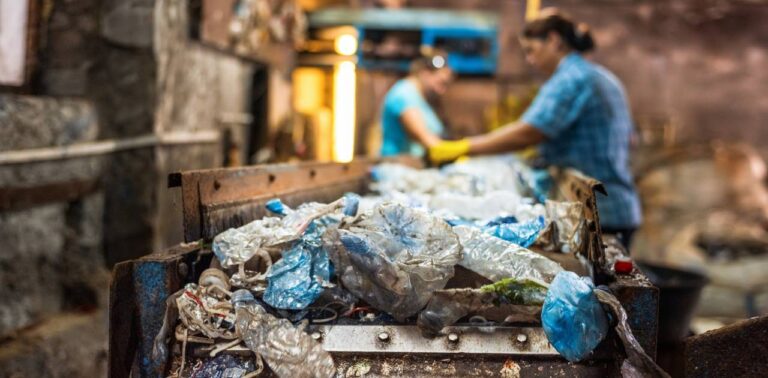Advertisements
In everyday life, most people use supermarket bags to dispose of their household waste, a common and convenient practice. But the question arises: is there a significant difference between these bags and traditional garbage bags? The answer may surprise you. Although both are widely used for waste disposal, the main difference between them lies not in the material they are made of, but in the value we attribute to each of them.

Comparing Materials: Polyethylene in Focus
Both grocery bags and garbage bags are made mostly from polyethylene, one of the most common and economical plastics. Polyethylene can be either low-density polyethylene (LDPE) or high-density polyethylene (HDPE). Grocery bags are usually made from LDPE or HDPE, while garbage bags are predominantly made from LDPE. Despite this variation, both are chemically similar, being derived from the same basic polymer. This means that, from a chemical point of view, there is no substantial difference between them.
Polyethylene, being a versatile and low-cost material, is widely used in the production of packaging. However, the durability and life cycle of products made from this material can vary depending on the use and context in which they are used.
The Life Cycle of Grocery Bags
Grocery bags have a significant advantage in terms of their life cycle. Initially, they are used as packaging for carrying groceries, a primary use that can be repeated many times. After this first use, they are usually reused for household waste disposal. This reuse process extends the life cycle of the bag, making it a multifunctional option.
If a grocery bag is used to package recyclable waste, it can still be recycled, returning to the production cycle as a new recycled plastic product. This recycling capability adds an extra layer of sustainability to the use of grocery bags, especially when compared to garbage bags, which have a shorter life cycle and a single purpose.

Supermarket Bag: Education and Sustainability
The issue of using supermarket bags is not just a question of chemistry or choice of materials. It is largely a question of education and environmental awareness. Reducing the use of packaging, reusing it whenever possible and ensuring that it is recycled correctly are essential practices to minimize environmental impact.
- Reduce: The first step towards conscious consumption is to reduce the use of unnecessary packaging. Choosing products with less packaging or taking your own reusable bags to the supermarket are effective ways to reduce the consumption of plastic bags.
- Reuse: Whenever possible, reuse grocery bags for other purposes, such as transporting items or temporarily storing objects. This practice extends the product's life cycle and reduces the need to produce new bags.
- Recycle: Recycling is the final and crucial step to ensure that plastic materials return to the production cycle. Properly separating waste for selective collection is essential for supermarket bags to be recycled properly.
Environmental Impact and the Importance of Conscious Choice
Although grocery bags and trash bags are similar in composition, their environmental implications can be different depending on how they are used and disposed of. Grocery bags, when reused and recycled properly, can have a smaller environmental impact compared to single-use trash bags.
The choice between using a grocery bag or a traditional trash bag goes beyond simple convenience. It’s a decision that can have a significant impact on the environment. Choosing to reuse grocery bags for trash disposal instead of buying trash bags can result in a significant reduction in plastic waste.
The Evolution of Grocery Bags and the Search for Sustainable Alternatives
In recent years, awareness of the environmental impacts of plastics has grown, leading to changes in consumer behavior and legislation. Many supermarkets are replacing traditional plastic bags with more sustainable alternatives, such as biodegradable bags or bags made from recycled materials. These alternatives aim to reduce the amount of plastic discarded into the environment and promote more responsible consumption practices.
However, it is important to highlight that, regardless of the material, reuse and recycling remain essential practices. Even biodegradable or recyclable bags should be used consciously to ensure that their environmental impact is minimized.
Ultimately, the difference between grocery bags and trash bags has more to do with consumer behavior than the chemical properties of the materials. By valuing grocery bags more for their initial packaging function, we often forget that these items can be equally useful for waste disposal and recycling practices.
Therefore, the key to more sustainable use of bags and trash bags lies in education and awareness. By understanding the importance of reducing, reusing and recycling, we can make more informed decisions that benefit both the environment and society as a whole. Whether we choose a grocery bag or a trash bag, the focus should always be on minimizing environmental impact and promoting sustainable practices.
Check out other interesting facts about recycling clicking here.
Learn how to make art by recycling, Click here.
Summary




I have a question. Are shopping bags recyclable?
Yes, they are recyclable, the bags and garbage bags come from LDPE (low density polyethylene) or HDPE (high density polyethylene), a fully recyclable material or rather one of the easiest materials to recycle.
I would like to know how to buy the 3kg, 15kg, 10kg and 40kg bags, as well as the 15, 30 and 10 liter garbage bags. 096)96981245549/991918768 … I await your response, eitor filho/macapa´/ap